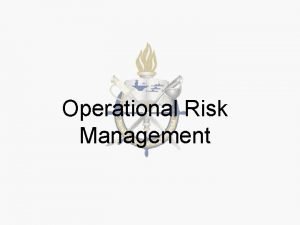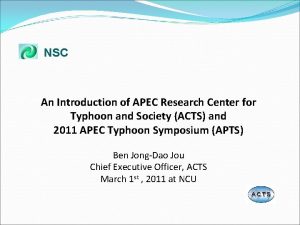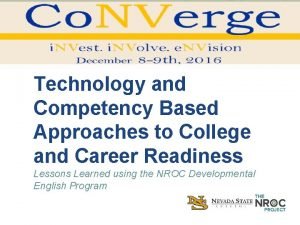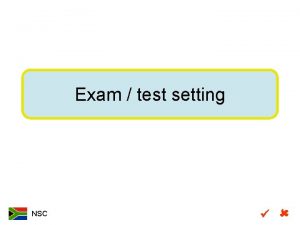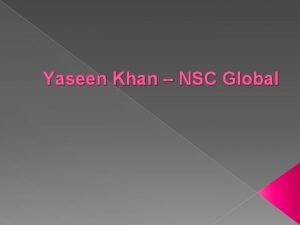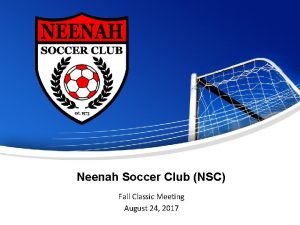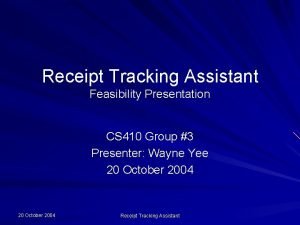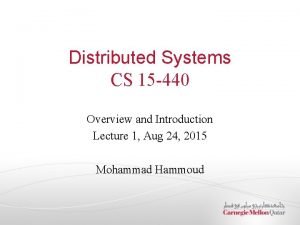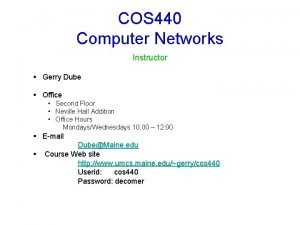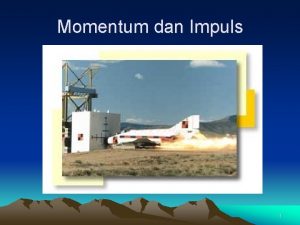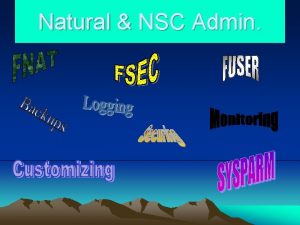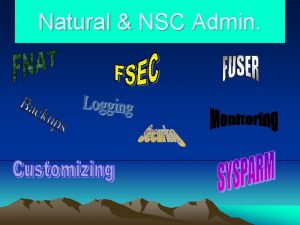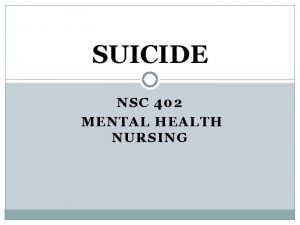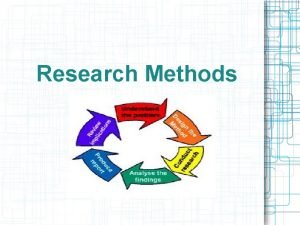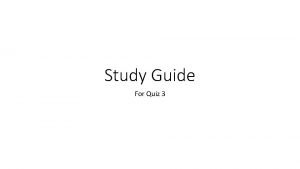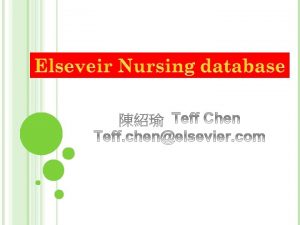Study Guide Research Methods in Nursing NSC 440














- Slides: 14

Study Guide Research Methods in Nursing (NSC 440) By Olufemi Ayandiran RN, M. Sc (Nursing)

1. Course Information General Information: n Students in this course should read this study guide carefully at the start of semester. It contains important information about the course. If anything in it is unclear, please consult one of the teaching staff on the course. Course Code & Course Name: Research Methods in Nursing (NSC 440) Credit points: 4 Year: 2010 Semester: Rain Semester About the Course n The course introduces learners to basic concepts in research, the research process, the use of the scientific process in the identification, study and solution of problems in Nursing and other related areas as well as skills needed for successful conduction of empirical studies. Lecturer Information: n Course Lecturer: Emmanuel Olufemi Ayandiran n Email: olufeman@yahoo. com; oluayan@oauife. edu. ng n Consultation: This will primarily be done through email and by

2. Introduction n n Nursing is both an academic and practice discipline. Its practitioner must therefore continue to discover and develop that body of knowledge that can are uniquely nursing so as to improve its practice and make practice make greater impact. These are only achievable when nurse practitioners embrace the ethos of scientific inquiry. Hitherto, research is viewed as one being carried out only by academics, nurse scientists, and graduate nursing students but today there has been a paradigm shift as participation in the research process is considered not only the responsibility of the academics but that of all nurses whether academics or clinicians.

Introduction (Contd. ) Aim n The aim of the course is to introduce the students to the use of the scientific process in the identification, study and solution of problems in Nursing and other related areas. n The course will also develop students’ generic skills and abilities in the following: 1. Critical analysis skills 2. Creative thinking skills 3. Writing skills 4. Conduction of Researches.

3. n n n Learning Objectives At the end of the course the student will be able to: Discuss problems for which the use of the scientific process is more appropriate. Discuss other methods used in solving problems and identify problems for which each method could be applied. Define research and identify the various steps of the research methodology Describe the various types of research in Nursing Discuss the significance of research in Nursing Develop a research proposal following the appropriate structure.

Learning Objectives (Contd. ) Present a research proposal to peer-group and instructors and give clarification as necessary. n Carry out a simple project utilizing the research process. n Select and apply simple statistics in the analysis and presentation of data. n Write up a completed project using appropriate communication stools. n Present a research project to a group for critical analysis and discussion. n

4. Symbols and Acronyms Stated below are some of the symbols and acronyms that are employed in this course: n APA n Ibid n et al. n RRA/PLA

5. Taking the Course n n n n Learners are expected to: take pretest at the beginning of each module. These tests are available in the study material. have a functional e-mail address and a facebook account. affix their matriculation number to their user name. study the material and participate in chatting and blogging as marks would be awarded for quality of comments and participation. use additional reference material provided. attempt the self-assessment questions and turn assignments as at when due. take the exam.

6. How to prepare for this examination n n n This study guide will provide you with the in-depth knowledge you will need in order to complete the exam. A Power. Point presentation has been included in this study material The supplemental VCD will expand your knowledge concerning this course. The sample questions and practice test at the end of this study guide will help you assess your knowledge before you take the examination. The examination is purely computer based testing (CBT). Students are expected to come to the CBT centre with their identity card. The reference textbooks outlined in each module will

7. Prerequisites n n Learners must have registered for NSC 440. Active participation in chatting and blogging is equally necessary.

8. Preparatory Questions n Tutorial questions covering the objectives are n n provided at the end of each unit. The answer to each of the questions raised are also provided together with explanations on why they are the correct response. Example Question: If a term is defined within the text of a section it does not need to appear in the glossary. True / False Correct Answer: False. A term needs to be in the glossary even if it has already been defined in order to provide the reader with a quick reference.

9. Assessment Continuous Assessment – 40% n Participation via comments on blog post and chatting – 20%. Participation should however indicate thoughtful preparation for the classes. n Tutor marked assignment – 20%. Assignments are expected to be turned in within 1 month of posting on the blog. B. End of Course examination – 60% C. Feedback and advice – Chat sessions will be arranged to discuss areas of weakness in the Tutor marked assignment. D. Exam arrangements q Learners are expected to arrive at the venue of the exam with their writing materials at least 30 minutes before the commencement of the exam. q Learners should take special note of their scheduled A.

Assessment (Contd. ) E. Plagiarism n The Open Distance Learning defines plagiarism in its rules: n Plagiarism involves using the work of another person and presenting it as one's own. n Plagiarism is a serious breach of the ODL’s rules and carries significant penalties. n Penalties may include: Ø a deduction of marks Ø failure in the course, and/or Ø referral to the Open Distance Learning disciplinary Committee.

10. Glossary n A list of definitions of all terms jargons, key words, unusual wordings and expressions used in this course are provided in alphabetical order here. See link. 11. Index / Tagging n Here, a list (in alphabetical order) of important terms, names, places, events, and topics along with the page numbers of where they are cited are presented. See link.
